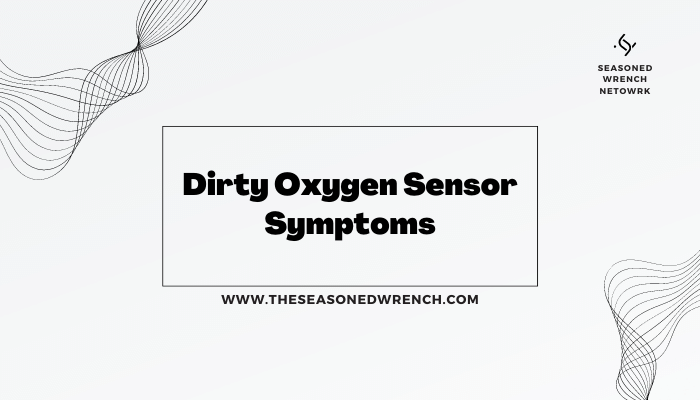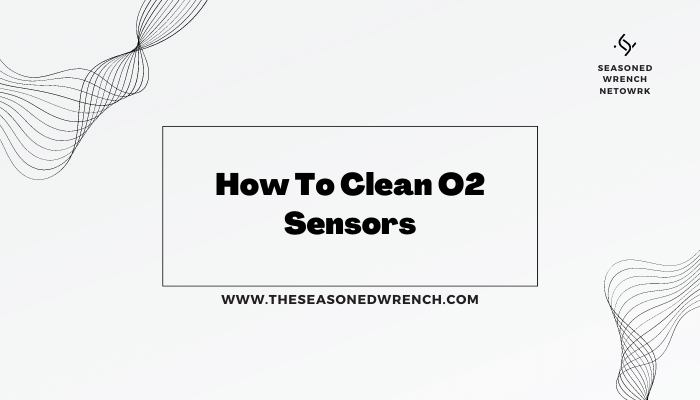If you’re here, chances are you’re a scrappy do-it-yourselfer – like myself. So speaking frankly, I’ll answer pretty much every question related to:
- if you can clean an oxygen sensor
- how to clean an oxygen sensor
- every piece of supplemental information you may need
Let’s get to it and address the biggest question of them all…
Can You Clean an O2 Sensor?
Yes, you can clean O2 sensors if they have accumulated dirt, grime, or other deposits that hinder their performance. Although it is not a routine maintenance task, cleaning an oxygen sensor can help restore its functionality and extend its lifespan.

How To Tell When To Clean an Oxygen Sensor
Your vehicle will show signs that indicate your O2 sensors may need cleaning. Some of the symptoms include:
- The check engine light comes on
- Increased fuel consumption
- Rough idling or engine misfires
- Poor acceleration and overall engine performance
Using an OBD-II scanner can help diagnose any issues related to the emissions system and detect if the oxygen sensor is causing the problem.
How Does an Oxygen Sensor Work?
An oxygen sensor plays a crucial role in your vehicle’s emissions control system. It monitors the how much oxygen is present in the exhaust gases, which helps the engine control module (ECM) determine the optimal air-fuel ratio for efficient combustion. The O2 sensor sends this information to the ECM, which then adjusts the fuel injection accordingly.
Where Are Oxygen Sensors Located?
Oxygen sensors are typically located in the exhaust system, situated before and after the catalytic converter. The number of sensors in your vehicle depends on its make, model, and year. You can find the exact location of your O2 sensors in your vehicle’s owner’s manual.

Signs of Dirty Oxygen Sensors
When an oxygen sensor gets dirty, or develops into a faulty sensor, it can cause several issues in your vehicle. Some common signs of a dirty O2 sensor include:
Poor fuel economy
The oxygen sensor works as a monitoring mechanism that monitors the flow from the fuel injectors and the air being pulled in from the air intake. When an oxygen sensor is malfunctioning, this mixture cannot be read accurately so the car begins to overcompensate by dumping excess fuel into the combustion chamber.
Rough idling or engine misfires
Similar to the reasons behind the poor fuel economy, the engine will have a rough idle, misfire, sputter when accelerating, or stall completely while driving since it will not receive a measured and consistent mixture of air and fuel.
Reduced engine performance and acceleration
Again, similar to both previous issues, the discrepancy in the air/fuel ratio inside the combustion chamber creates a lean – or rich – running condition for the car which will effect overall engine performance when the oxygen sensor cannot correctly measure the contents flowing through the exhaust manifold.
A check engine light that remains illuminated
The car’s ECM monitors all sensors in the vehicle, so when an oxygen sensor goes bad the ECM will automatically illuminate the check engine light to let the driver know there is an issue. At this time, you can use an OBDII scanner to read any error code that may be present.

How To Clean O2 Sensors
Before jumping into cleaning your oxygen sensors, there is some equipment that you’ll need. Here are some of the items you can use, and will need, to clean an oxygen sensor:
- car jack
- gasoline bucket or industrial container
- wire brush
- preferred cleaning solutions
- safety goggles
- plastic bowl
- protective eyewear
Otherwise, cleaning an oxygen sensor involves several steps. Here’s a step-by-step guide on how to clean your O2 sensors:
Step 1: Safety Precautions
Wear gloves, goggles, and a face mask to protect yourself from gasoline and other chemicals during the cleaning process.
Step 2: Locate the Oxygen Sensors
Refer to your vehicle’s owner’s manual to find the exact locations of the oxygen sensors in your exhaust system.
Step 3: Remove the Oxygen Sensors
Spray a lubricant on the sensors to help loosen them, then use an O2 sensor wrench – typically hexagon shape – to carefully remove them from their fittings.
Step 4: Prepare a Gasoline Bath
Place the removed sensors in a gasoline-safe container, and add gasoline into the container until the sensors are fully immersed.
Step 5: Soak the Sensors Overnight
Seal the container and let the sensors soak overnight in the gasoline to loosen any deposits on their surface.
Step 6: Clean the Sensors
After the oxygen sensor(s) have soaked overnight use a soft-bristled brush dipped in gasoline to gently scrub away any remaining dirt or deposits on the sensors.
Step 7: Dry and Reinstall the Sensors
Completely dry the cleaned sensors using paper towels, and then reinstall them in their respective positions using the O2 sensor wrench.
How Often Should You Clean Your Oxygen Sensors?
The frequency of cleaning your oxygen sensors depends on your driving habits and vehicle usage. For vehicles driven daily, you may need to clean the sensors as often as four times a year. In contrast, lesser-used cars may require cleaning once a year. Regularly using a catalytic converter cleaner or fuel additives can help keep the sensors clean and functional.

Will Seafoam Clean an Oxygen Sensor?
Seafoam is a popular fuel additive that can help clean your engine and improve its performance. While it may help remove some deposits from the O2 sensors, it is not specifically designed for cleaning oxygen sensors. Using a dedicated catalytic converter cleaner is a better option for cleaning O2 sensors.
Will Fuel Cleaner or Catalytic Converter Cleaner Clean Oxygen Sensors?
Fuel cleaners or fuel system additives like catalytic converter cleaner can help maintain the overall health of your engine and can contribute to keeping your O2 sensors clean. However, they may not be as effective as a dedicated catalytic converter cleaner or a thorough manual cleaning process.
Can You Clean an Oxygen Sensor with MAF Cleaner?
While it may be tempting to clean your O2 sensor with a mass airflow (MAF) sensor cleaner, it’s not recommended.
MAF cleaner is not designed for oxygen sensors and can potentially damage the delicate components of the sensor.
Instead, if your O2 sensor is dirty or faulty, it’s best to replace it with a new one that is designed to fit your specific make and model of vehicle.
How Do I Know If My O2 Sensor is Dirty?
There are a few signs that your O2 sensor may be dirty or faulty.
One common symptom is a decrease in fuel efficiency. If your vehicle is using more gas than usual, it could be due to a faulty O2 sensor.
Also, you may notice a decrease in engine performance, rough idling, or stalling and your check engine light may also come on, indicating an issue with your emissions control system.
How Do You Clean an O2 Sensor Without Removing It from The Exhaust System?
To clean an oxygen sensor without removing it, you can use a catalytic converter cleaner or an emissions system cleaner. These products are designed to clean the sensors while they are still installed in the vehicle. Follow the product’s instructions to ensure you use the right amount for your vehicle and the proper fuel level in your tank. After adding the cleaner, drive your car to circulate the product through the system and clean the sensors.
What Causes O2 Sensors to Go Bad?
There are several factors that can contribute to O2 sensor failure. One common cause is exposure to high levels of contaminants such as oil or coolant. Over time, these contaminants can build up on the sensor and cause it to malfunction. Exposure to extreme heat or vibration can also cause damage to the sensor.
Another common cause of O2 sensor failure is age. Like all components in your vehicle, oxygen sensors will eventually wear out over time and need to be replaced.